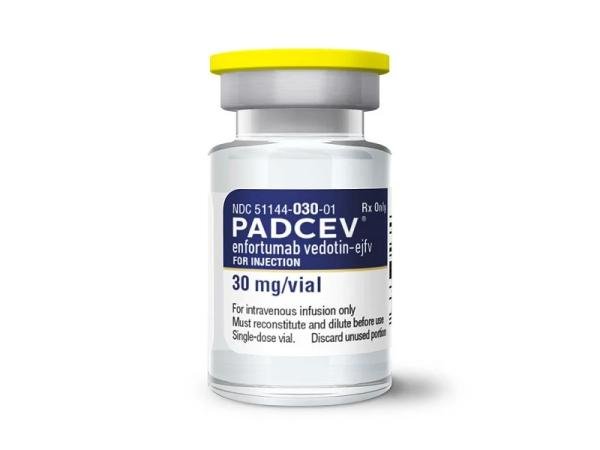Enfortumab vedotin Disease Interactions
There are 3 disease interactions with enfortumab vedotin.
Enfortumab vedotin (applies to enfortumab vedotin) hepatic impairment
Major Potential Hazard, Moderate plausibility. Applicable conditions: Liver Disease
Avoid the use of enfortumab vedotin in patients with moderate or severe hepatic impairment as it has not been studied in these patients. No adjustment in the starting dose is required when treating patients with mild hepatic impairment.
Enfortumab vedotin (applies to enfortumab vedotin) hyperglycemia/diabetes
Moderate Potential Hazard, Moderate plausibility. Applicable conditions: Diabetes Mellitus
Hyperglycemia occurred in patients treated with enfortumab vedotin, including death, and diabetic ketoacidosis (DKA) in those with and without preexisting-existing diabetes mellitus. The incidence of Grade 3-4 hyperglycemia increased consistently in patients with higher body mass index and in patients with higher baseline A1C. Closely monitor blood glucose levels in patients with, or at risk for, diabetes mellitus or hyperglycemia. If blood glucose is elevated (>250 mg/dL), withhold treatment.
Enfortumab vedotin (applies to enfortumab vedotin) peripheral neuropathy
Moderate Potential Hazard, Moderate plausibility.
Peripheral neuropathy, predominantly sensory, occurred in 49% of the patients treated with enfortumab vedotin in clinical trials. Peripheral neuropathy occurred in patients with or without preexisting peripheral neuropathy. Monitor patients for symptoms of new or worsening peripheral neuropathy and consider dose interruption or dose reduction when peripheral neuropathy occurs. Permanently discontinue treatment in patients that develop Grade >3 peripheral neuropathy.
Switch to professional interaction data
Enfortumab vedotin drug interactions
There are 486 drug interactions with enfortumab vedotin.
More about enfortumab vedotin
- enfortumab vedotin consumer information
- Check interactions
- Compare alternatives
- Reviews (3)
- Side effects
- Dosage information
- During pregnancy
- Drug class: miscellaneous antineoplastics
- Breastfeeding
- En español
Related treatment guides
Drug Interaction Classification
| Highly clinically significant. Avoid combinations; the risk of the interaction outweighs the benefit. | |
| Moderately clinically significant. Usually avoid combinations; use it only under special circumstances. | |
| Minimally clinically significant. Minimize risk; assess risk and consider an alternative drug, take steps to circumvent the interaction risk and/or institute a monitoring plan. | |
| No interaction information available. |
See also:
Further information
Always consult your healthcare provider to ensure the information displayed on this page applies to your personal circumstances.


